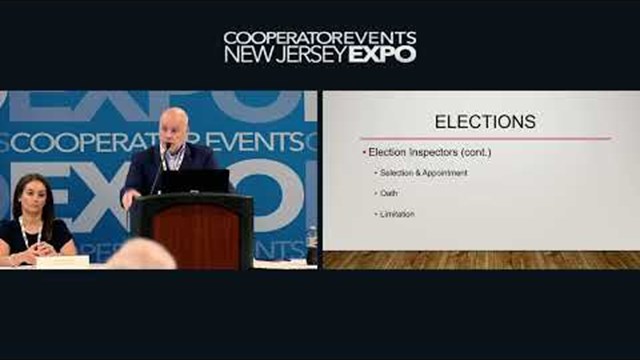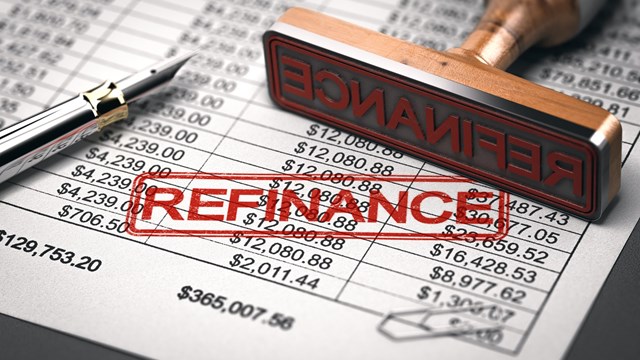The Community Associations Institute (CAI) estimates that 74 million Americans live in communities managed by homeowners associations, of which condos account for 35% to 40%. That’s a lot of people - many of whom may be in for a nasty shock when they go to pay their monthly common charges, if they haven’t already gotten one.
Bloomberg and Crain’s New York Business are among the outlets reporting on the national trend of surging carrying charges for condos, co-ops, and HOAs. The monthly fees paid by owners of units in multifamily communities and buildings for the upkeep of common elements, utilities, taxes, personnel, and other shared costs have risen significantly this year, in large part due to rising energy costs, but also to repairs, wage increases, and unforeseen expenses related to COVID.
Crain’s cites data from real estate data aggregator Zillow indicating that the national monthly median condo fee increased 19% this year, from about $379 in August 2020 to about $451 in August 2021. As the outlet points out, that increase means that unit owners have had to find an additional $900 in their household budgets this year.
It’s All Interrelated
The services that most associations rely on, such as landscaping, plumbing, and construction in general, have seen shortages in both labor and supplies in recent months, forcing vendors to increase prices. This in turn adds up for associations, whose residents are ultimately responsible for such costs through the monthly common charges. These shortages, in addition to overall inflation, have also increased the costs of energy and utilities nationwide.
The tragic, deadly collapse of the Champlain Towers South condo in Surfside, Florida this June has had financial repercussions for multifamily buildings across the country. It instigated a wave of stricter inspection and repair laws, which has translated to more costs for the associations that must now perform those inspections and repairs. Moreover, the investigation into the cause of the collapse has brought heightened attention to the changing climate’s effects on buildings and infrastructure, bringing into stark relief that structures and systems now age and deteriorate more rapidly due to the harsher environmental factors.
While what led to the Champlain Towers collapse is still under investigation, the contributing factors of climate change and the particular challenges of volunteer board governance have made associations and co-op corporations more expensive to insure as well. The increased severity and frequency of hurricanes, wildfires, tornadoes, and other catastrophic weather events, coupled with rising seas, pollution, and deferred maintenance on ever-aging buildings, have given insurance providers reasons to be wary of the risks involved with multifamily property coverage.
Kevin Keating, an architect with Selldorf Architects, a global architectural firm based in New York, tells CooperatorNews, “Insurance is getting more and more complicated. Insurance companies always look to avoid risk, so they may refuse to insure some projects or buildings. The more storms, wildfires, etc., we have, the more insurance premiums will go up—and [may] reach a threshold where insurers feel it’s not worth the risk. There will be fewer and fewer companies offering protection.”
And let’s not forget the ongoing global pandemic that is still killing tens of thousands daily, according to data from the World Health Organization (WHO). It’s also adding costs to co-op, condo, and HOA living. Due to COVID, more residents have been spending more time at home—and adding more electronics to accommodate their work, school, exercise, social, and leisure needs. While individual households might be charged for their usage in instances where they are separately metered, the cost for delivery of electricity—and its use in the common spaces such as lobbies, hallways, and elevators—is still borne by the association. With more residents at home, these common elements get more use. They therefore also require more maintenance. And the cycle continues.
COVID has also reduced or eliminated other income streams that associations and corporations have historically relied on to offset maintenance and assessment charges. Commercial tenants that pay rent to co-ops and condos have struggled for the last year and a half across the country; many have had to shutter. If they’ve managed to survive, it is likely that they’ve had to work out rent reductions or deferrals with their landlords—the condo associations and co-op corporations—who then have to make up the difference in their budgets somehow.
Increase amenity fees? Not an option for many boards, who have had to implement total closures or strict limits on use of spaces like gyms and fitness centers, playrooms, community facilities, shared work spaces, or other residential amenities to reduce the spread of COVID on their properties. Those that have kept those spaces open or reopened them at some point have needed to enhance cleaning, staffing, supplies, and—in some cases—ventilation and HVAC systems to comply with regional mandates and keep residents and employees as safe as possible. All those costs add up.
Only in New York
In New York City, where everything seems to be more expensive than anywhere else in the country, median monthly condo and co-op fees tower above those of other municipalities. They also saw a bigger jump this year than anywhere else, rising 22% from August 2020 to August 2021, according to Crain’s. That makes the median monthly fee in the Big Apple now more than double the national median, at $948. According to real estate appraisal firm Miller Samuel’s data from earlier this year, the average maintenance charge in Manhattan is $1.68 per square foot per month. (That means that the average New York owner or shareholder of a two-bedroom, which hovers around an average of 1,200 square feet in the city, is already paying over $2,000 per month in common charges.)
Aside from being among the most expensive per square foot, New York’s housing stock is older than that in many cities, which means that the costs to heat and cool these buildings is higher than in newer construction, and there is also greater and more frequent need for repairs and replacements. Maintenance on older structures can also be pricier due to the lack of supportive infrastructure such as service elevators, above-grade mechanicals, capacity for high voltage, and smart technology. Outdated parts can be hard to find; labor to fix older systems can also be in short supply, and thus more expensive.
Speaking of labor, these costs have gone up for New York co-ops and condos as well, thanks in part to brand new legislation that guarantees prevailing wages and benefits for building service workers in luxury co-ops and condos. Granted, the last people who should get the short end of the stick in a building’s financial crunch are the staff who clean, secure, maintain, attend, and guard it—but it still equates to a budgetary line item in the “expense” column for which there must be a commensurate increase in the “income” column for buildings subject to the law.
Last but not least, the aforementioned age of New York’s housing stock also makes the onus of complying with Local Law 97 that much more challenging and expensive. For buildings that run on fossil fuels, reaching carbon-neutral status is going to require significant planning, financing, and disruption. Aging pipes, drainage systems, and other utility conduits lead to more water and energy waste, not to mention leaks and other emergencies. Old windows, uninsulated brick construction, and aging roofs also add to energy loss and more need for repairs and replacements.
As the first compliance deadline approaches in 2025, co-ops and condos over 25,000 square feet will have to weigh the costs of improving their energy profile against the costs of the fines for not doing so, which increase significantly at each compliance threshold. In performing this fiscal balancing act, it should be considered that the costs of such projects will be somewhat mitigated by the savings from reduced usage and increased efficiency. Financing through programs like PACE and NYSERDA could also reduce the bottom line for these capital expenses.
But make no mistake—whether you live in a Billionaire’s Row behemoth or a modest multifamily in Midwood, expect monthly association/corporation fees to go up this year, if they haven’t already.










Leave a Comment